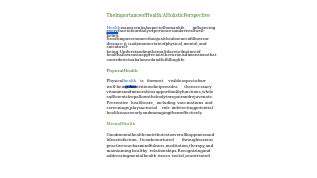
Diagnosis and Treatment Using Meridian Theory
Understanding Meridian Pathways
Meridian theory, a fundamental concept in Traditional Chinese Medicine (TCM), posits a network of pathways throughout the body that are believed to carry vital energy, or Qi. These meridians are not physical structures like blood vessels, but rather energetic channels that connect various organs, tissues, and points on the surface of the body. Understanding these pathways is crucial for diagnosing and treating imbalances, as disruptions in the flow of Qi can manifest as various physical and emotional symptoms. TCM practitioners often use diagnostic methods to assess the condition of these pathways, looking for blockages or imbalances in the Qi flow.
The concept of meridians goes beyond a simple anatomical map. It incorporates the interconnectedness of all parts of the body, recognizing that imbalances in one area can impact others. This holistic approach is a key difference from Western medicine, which often focuses on isolated symptoms and organ systems. The pathways are not merely conduits for energy; they are also considered to be integral to the body's overall harmony and well-being. This holistic perspective is essential to understanding the full scope of meridian theory.
Diagnostic Methods in Meridian Theory
TCM practitioners employ a variety of diagnostic methods to assess the state of meridians and identify potential imbalances. Pulse diagnosis, for example, involves evaluating the rhythm, strength, and quality of the pulse at specific points along the body, providing insight into the flow of Qi and the overall health condition. Observing the complexion, tongue, and overall demeanor of the patient, along with asking detailed questions about symptoms and lifestyle, are also crucial steps in the diagnostic process. These methods aim to understand the underlying energetic imbalances that might be affecting the meridians, leading to disease or discomfort.
Acupuncture is another important diagnostic tool, as the location of pain or tenderness along the meridians can provide insights into the areas where Qi flow is blocked or disrupted. By mapping these points, practitioners can identify the specific meridian or meridians that require attention. The combination of these methods allows for a comprehensive assessment, moving beyond simply addressing symptoms and working towards restoring balance within the body's energetic system.
Treatment Approaches Based on Meridian Theory
Once imbalances in the meridians are identified, TCM practitioners employ various treatment modalities to restore the flow of Qi. Acupuncture, a technique involving the insertion of thin needles at specific points along the meridians, is a widely recognized treatment approach. This stimulates the flow of Qi, relieving blockages and promoting overall health. Acupressure, a similar technique involving applying pressure to specific points, can also be utilized to achieve comparable results. Other methods, such as herbal remedies, dietary recommendations, and lifestyle modifications, may also be incorporated to support the body's natural healing mechanisms and address the underlying imbalances that affect meridian function.
These treatments aim to address the root cause of the imbalance, rather than just treating the symptoms. The focus is on restoring the harmonious flow of Qi throughout the meridians, supporting the body's natural ability to heal itself. By addressing the energetic imbalances within the meridians, TCM practitioners aim to promote overall well-being and prevent future health issues.
Furthermore, lifestyle changes, such as adjusting diet, promoting relaxation, and fostering good sleep hygiene, play a vital role in supporting the flow of Qi within the meridians. These lifestyle modifications, combined with other TCM treatments, can reinforce the body's natural healing capacity and ultimately contribute to optimal health and well-being.